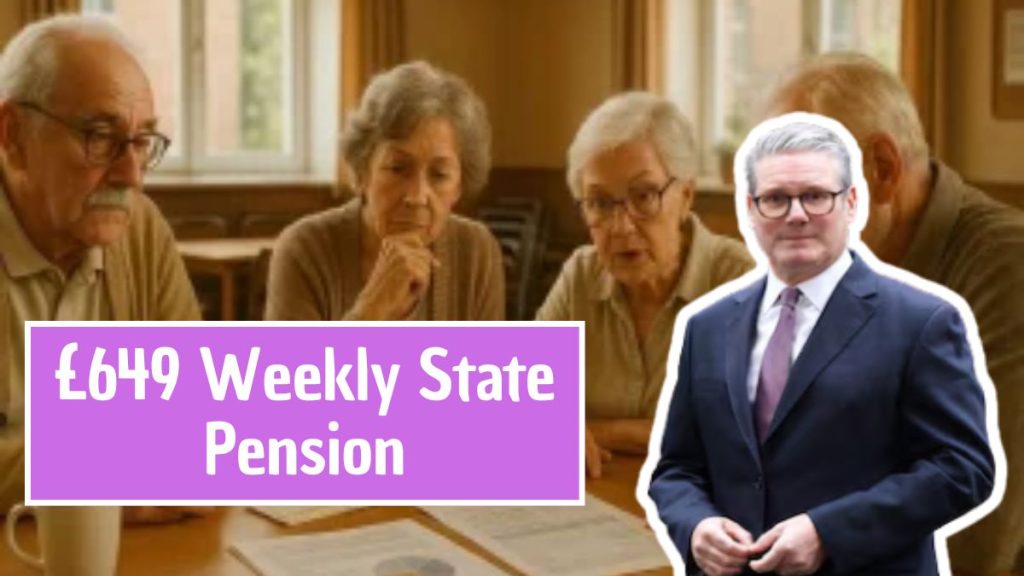From October 2025, millions of UK households will see a significant rise in their energy bills, following Ofgem’s latest price cap update. After several years of turbulence in the energy market, consumers are once again facing higher heating, gas, and electricity costs.
This latest increase underscores the ongoing volatility of the global energy market and the challenge of balancing household budgets during uncertain economic times. Whether you pay by direct debit, prepayment meter, or fixed tariff, understanding what’s behind these changes — and how to manage them — is more important than ever.
Why Energy Bills Are Increasing Again

The confirmed rise in October 2025 reflects a mix of global and domestic pressures that continue to drive up energy prices.
The main factors include:
- Higher wholesale gas costs due to renewed supply constraints and winter demand surges.
- Infrastructure and network upgrade expenses, passed on to consumers through higher standing charges.
- Currency fluctuations and energy import costs.
- Government policies and green levies, which contribute to long-term sustainability efforts but raise short-term prices.
Although the energy market saw brief stability in mid-2024, global disruptions and storage shortages have caused prices to climb again. Ofgem’s quarterly price cap review captures these shifts — and this time, the outcome means higher bills for nearly every UK household.
The Real Impact on the Average Household
For a typical dual-fuel household, bills are expected to rise by hundreds of pounds per year.
While exact figures will vary depending on usage, Ofgem’s new cap suggests the average home could see annual costs rise to over £2,000, compared to around £1,690 earlier in the year.
- Gas-heavy households — especially those with older boilers — will feel the biggest impact.
- Rural homes using LPG or heating oil may face additional cost pressures.
- Businesses are likely to pass on higher energy expenses to customers, raising the overall cost of living for everyone.
For many families, this will mean tighter monthly budgets and the need to re-evaluate spending priorities before winter begins.
Understanding the Ofgem Energy Price Cap
The energy price cap is a government regulation managed by Ofgem, designed to limit how much suppliers can charge per unit of energy for households on standard variable tariffs.
However, it does not set a limit on your total bill — what you pay still depends on how much energy you use.
The October 2025 update establishes a new, higher cap for the final quarter of the year. While it protects consumers from extreme overcharging, it also adjusts upwards when wholesale costs rise.
Households on fixed-rate tariffs may temporarily avoid the increase, but when their deals expire, they could face a steep jump unless they secure a new fixed plan early.
How Payment Methods Will Be Affected
Your payment type plays a key role in how the price rise affects your household:
- Direct Debit Customers: Monthly payments will automatically increase, often by a set percentage. Some suppliers will review your account and suggest a higher amount to avoid falling into debt over winter.
- Prepayment Meter Users: This group — often the most vulnerable — traditionally pays more per unit. The October 2025 increase is likely to widen this gap, making it essential to check eligibility for energy vouchers or hardship funds.
If you’re unsure which payment method suits you best, speak to your supplier before the rise takes effect.
Government and DWP Support Schemes
To help offset the burden of rising energy bills, the Department for Work and Pensions (DWP) provides several forms of support.
These include:
- Winter Fuel Payment – up to £300 for pensioner households.
- Cold Weather Payment – £25 for each week of freezing temperatures.
- Warm Home Discount – £150 off your electricity bill for low-income or vulnerable customers.
- Cost of Living Payments – additional one-off support for those receiving Universal Credit, Pension Credit, or disability benefits.
Many of these schemes apply automatically if you’re eligible. However, checking your benefit status now ensures you don’t miss out when payments resume in autumn 2025.
How to Reduce Energy Use and Costs
While the October increase is unavoidable, there are ways to limit its impact.
Practical energy-saving steps include:
- Insulating lofts, walls, and floors to retain heat.
- Installing draught excluders around doors and windows.
- Switching to LED bulbs and energy-efficient appliances.
- Lowering your thermostat by 1°C, which can cut heating bills by up to 10%.
- Using smart thermostats and energy monitors to track and control usage.
Though small individually, these measures can collectively save hundreds of pounds per year and reduce long-term consumption.
Switching and Comparing Tariffs
Even during price hikes, switching suppliers or tariff plans can still bring savings.
Before October 2025:
- Compare energy tariffs using trusted price comparison websites.
- Review exit fees before leaving your current deal.
- Consider fixed-rate tariffs if you prefer predictable costs over the winter.
- For renters, check with landlords whether you can switch suppliers without penalty.
Locking in a competitive tariff early could protect your household from further rises over the next 12 months.
Budgeting and Financial Planning for Higher Bills
Preparing for higher energy costs starts with a clear financial plan.
Here’s what experts recommend:
- Create a realistic monthly budget that prioritises essentials like energy and rent.
- Set aside small savings each month to build a winter energy fund.
- Contact your energy supplier early if you’re struggling — they are legally required to offer affordable repayment options and cannot disconnect vulnerable customers in winter.
- Use free financial advice services such as Citizens Advice or StepChange if bills become unmanageable.
Planning now can prevent arrears and financial stress later in the year.
Local and Community Support Options
Many local councils and community energy hubs across the UK provide additional help. These include:
- Emergency energy vouchers and fuel credit top-ups.
- Home energy assessments for insulation or boiler upgrades.
- Bulk-buy fuel schemes for rural areas.
- Grants for low-income homeowners to replace inefficient appliances.
By reaching out early — ideally before the October increase — households can access local aid and reduce the burden of higher prices.
Protecting Vulnerable and At-Risk Households
Certain groups face greater risks from rising energy prices, including:
- Older adults living alone.
- People with medical conditions that require constant heating or electricity.
- Families with young children.
Registering with your supplier’s Priority Services Register ensures you receive extra support, such as early outage notifications and billing assistance. This service is free and available from all energy providers.
What to Expect Beyond October 2025
Experts warn that energy volatility may continue into 2026, meaning more price adjustments in the future.
To protect yourself long-term:
- Invest in home efficiency where possible.
- Explore renewable energy options, like solar panels or heat pumps.
- Stay informed about Ofgem’s quarterly price updates.
The October 2025 rise should be viewed as part of a broader trend, not an isolated event — one that rewards households who plan ahead.
5 Steps You Can Take Right Now
To get ready for the October 2025 increase, start with these actions:
- Review your current tariff and contract.
- Check eligibility for DWP and local council support.
- Make small energy-saving improvements at home.
- Update your budget to reflect higher monthly bills.
- Contact your supplier if you expect payment difficulties.
Early preparation can make all the difference when prices rise.
Key Takeaways
- When: October 2025
- What: Significant energy bill increase under the new Ofgem price cap
- Who: All households on variable or default tariffs
- Why: Higher wholesale gas costs, infrastructure charges, and inflation
- Support: Winter Fuel Payment, Warm Home Discount, Cost of Living Payments
- Action: Review tariffs, improve efficiency, and seek available support early

















